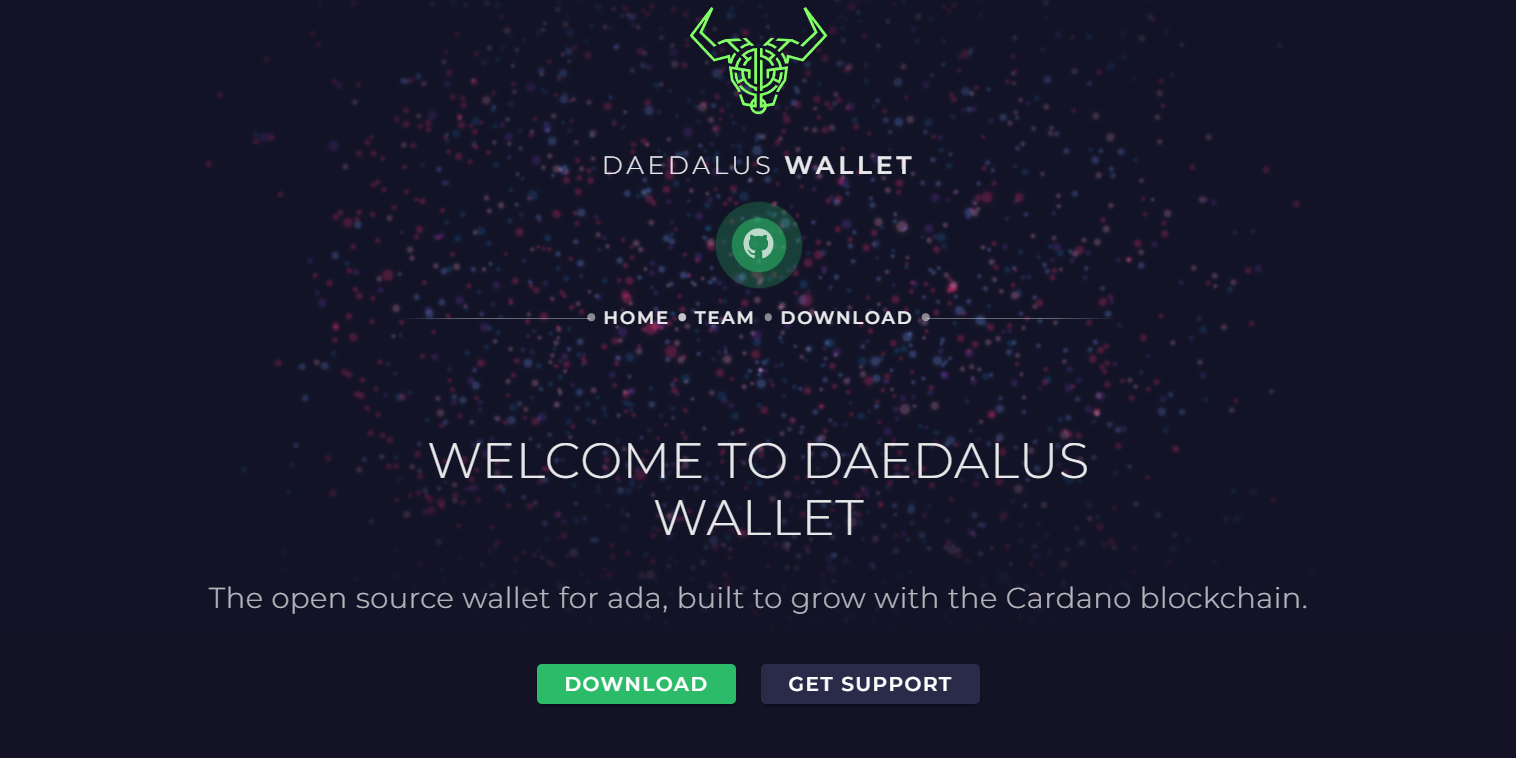Cardano is one of the leading level 1 blockchain solutions in terms of market capitalization. The project is being developed by Input-Output under the guidance of Charles Hoskinson, with participation from Emurgo and the Cardano Foundation. The network is named after the Italian mathematician Gerolamo Cardano, and its native cryptocurrency is named after the 19th-century mathematician Ada Lovelace.
Cardano utilizes a Proof-of-Stake (PoS) consensus mechanism called Ouroboros. Under this mechanism, ADA holders have the ability to delegate their funds to staking pools. The overall stake controlled by each pool allows them to verify transactions, create blocks, and govern the network.
The Ouroboros protocol utilizes cryptography, combinatorics, and mathematical game theory to ensure the integrity, longevity, and efficiency of the protocol. Validators participating in the Ouroboros protocol receive rewards with a certain fixed pool size and an additional margin. Additionally, Ouroboros directly allocates rewards to all delegates participating in the staking process.
Staking provides an opportunity for ADA holders who may not have the skills or desire to run their own nodes to participate in the network and earn rewards based on the amount of tokens they delegate. Staking pools serve as a solution for users who want to stake their tokens on the blockchain but may not necessarily play the role of validators in the network.
Table of Contents:
- What are non-custodial cryptocurrency wallets?
- How to create a non-custodial wallet on Cardano?
- How to Stake ADA and Earn Rewards
- How to use the Daedalus wallet for cryptocurrency staking?
- Resolving common issues with staking ADA using a non-custodial wallet

What are non-custodial cryptocurrency wallets?
Non-custodial wallets are a way to store cryptocurrency assets or non-fungible tokens (NFTs) where the user typically has sole access and control over the wallet. In contrast, an alternative approach is to store these assets on centralized exchanges, where users face counterparty risk in case of exchange failure.
However, most individual wallets still require users to keep their private keys. Private keys are necessary for users to maintain control over their crypto assets. Unlike storing on centralized exchanges, self-custody eliminates counterparty risk. Therefore, it is generally considered the preferred option for Web3 users, especially after the collapse of several exchanges in 2022.
Many Layer 1 ecosystems have their own wallet solutions for storing and managing assets. For example, when it comes to Ethereum and ERC-20 assets, most users rely on MetaMask. Similarly, many Solana users prefer to use the Phantom wallet.
In 2017, Cardano was launched, and along with it came the full-fledged Daedalus wallet by IOHK. Two years later, in 2019, Emurgo released the lightweight Yoroi wallet. After the Shelley mainnet hard fork in 2020, the Cardano ecosystem expanded significantly, and a wider range of wallets became available.
There are different types of wallets for Cardano, including full nodes and lightweight wallets, which are available as standalone applications for Windows, Linux, and Mac, as well as browser plugins and mobile apps. One unique feature of Cardano wallets is their ability to work with both single-address and multi-address wallets. This is because Cardano uses a UTXO (Unspent Transaction Output) model, similar to Bitcoin, instead of the account model used by Ethereum.
Additionally, Cardano offers native tokens to its users. In a user's wallet, they can store not only ADA but also a large number of other tokens and NFTs. Another interesting feature of Cardano is the ability to add metadata within transactions.

The Nami Wallet specializes in NFT technology, while the Flint Wallet creates connections between different blockchain networks and technologies. However, the Typhon and Etrnl wallets are advanced implementations that offer a wide range of features such as support for multiple accounts within a single wallet, staking, voting, and the ability to transfer an unlimited number of assets to multiple recipients in a single transaction.
One key feature of staking in Cardano using a custodial wallet is that the wallet owner never transfers their ADA tokens to external addresses and retains full control over them. Delegation is based on the amount of ADA held in the wallet at the end of each epoch (a five-day period).
How to create a non-custodial wallet on Cardano?
The Yoroi wallet is one of the numerous wallets that can be used to store Cardano assets directly by the owner. Here is a step-by-step guide to creating a Yoroi wallet:
- You can download the Yoroi wallet as a browser extension from the official Yoroi Wallet website.
- After downloading and installing the browser extension, clicking on it will open the Yoroi application page.
- On the application page, click on the "Add new wallet" button to start the wallet creation process.
- On the next screen, you will be presented with three options: connect a hardware wallet, create a new wallet, or restore an existing wallet.
- To create the first Cardano wallet, select the option "Create wallet".
- Then choose "Cardano" as the currency and provide a name for the wallet and set an appropriate password on the subsequent screens.
- The next step will involve setting up the recovery phrase, which needs to be written down in the correct order and confirmed on the following step.
- Now your wallet is ready to receive Cardano assets.
- To add some ADA to your wallet, you can click on the "Receive" tab, where your wallet address will be displayed.
- To fund your ADA wallet, you can transfer funds from an exchange and initiate the staking process.

How to Stake ADA and Earn Rewards
As mentioned earlier, transaction validation in the Cardano network relies heavily on ADA staking, which is carried out by validators and other holders through staking pools. In turn, the network offers rewards for staking to these interested parties. ADA holders who cannot perform the functions of validators can "delegate" their ADA to staking pools.
Since the introduction of staking, pool operators and delegates have received a reward of 5% of the staking amount. However, over time, this reward gradually decreased to 4% due to planned gradual use of reserves. Out of the total ADA supply of 34.7 billion, approximately 24.5 billion ADA (which accounts for 69% of the total supply) has been staked. Over 70% of ADA has been staked by ADA holders through staking pools.
In the Cardano network, owners have access to more than 3000 pools to choose from. To stake ADA, holders can take the following actions through a wallet interface like Yoroi or any other Cardano wallet.
- The wallet's "Delegation List" page provides the option to select delegates.
- Pool operators can also contribute to the pool, which is reflected in the "Stake" column. The higher the stake value, the more advantages.
- Holders wishing to start staking can choose a pool and click the "Delegate" button.
How to use the Daedalus wallet for cryptocurrency staking?
Daedalus is another wallet for users of the Cardano network. Here is a guide on how to staking ADA using the Daedalus wallet:
- To properly install the Daedalus wallet, it is recommended to download it from the official website: https://daedaluswallet.io/.
- After installing the application on your computer, it offers two options: restore an existing wallet or create a new one.
- The user needs to provide a wallet name and set a password.
- When choosing to create a new wallet, the user is given a 24-word recovery phrase that needs to be written down and confirmed.
- After creating the wallet, it starts synchronizing with the blockchain.
- Once synchronization is complete, the user should go to the "Staking" tab to begin the staking process.
- By clicking on the "Delegate" button, the user enters the delegation center, where they are presented with a choice of several staking pools.
- The user selects a pool, specifies the amount of ADA they want to stake, and confirms the operation.
- After the transaction is processed, the user's ADA is delegated to the chosen pool.
- Subsequently, the selected pool is responsible for packaging transactions into blocks and verifying transactions.
- At the end of each five-day epoch, the Ouroboros protocol automatically distributes rewards from the reserves to all ADA wallets, instead of the pool operator.

Resolving common issues with staking ADA using a non-custodial wallet
Below are common problems that users may encounter when using non-custodial wallets to store ADA, as well as suggested steps to resolve these issues:
| Problem | Solution |
|---|---|
| Failure to find staking pools | If a user cannot find a suitable pool for staking, they can use a staking pool search tool or expand the search parameters to include more options. Specialized staking portals like PoolTool can help users further research the history and performance of such pools. |
| Wallet synchronization issues | If a user's wallet fails to synchronize correctly or displays incorrect information, they can try restarting the wallet or using a different device. It's also worth checking for available updates or fixes for the wallet software. |
| Transaction execution errors | If a user encounters an error while delegating ADA or withdrawing rewards, they should ensure that the correct information is entered and that there are sufficient funds in the wallet to cover transaction fees. Clearing the cache or using a different browser can also be attempted. |
| Failure to receive staking rewards | To receive staking rewards, a user must ensure their delegation is active and that the pool they delegated to is generating blocks. If blocks are not being generated, rewards will not be received. Updating the wallet or checking a blockchain explorer can also be done to verify reward distribution. |
It is important for users to know that if they are unable to use one of the ADA wallet applications, they can use the recovery phrase to restore their wallet in another application at any time. This will allow them to access their ADA and other assets. If users encounter other issues with storing ADA in the wallet, they can reach out to the Cardano application support or seek advice on online forums and communities to get recommendations.
It is also crucial for users never to share their wallet recovery phrases or take screenshots and share them with individuals claiming to help with their wallet. Additionally, users should not trust anyone asking them to transfer their funds to a new address and should exercise caution regarding scammers.





